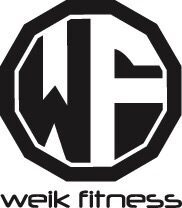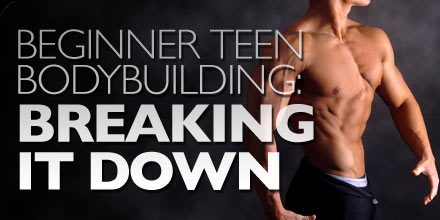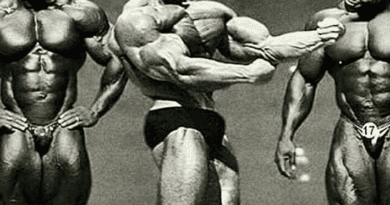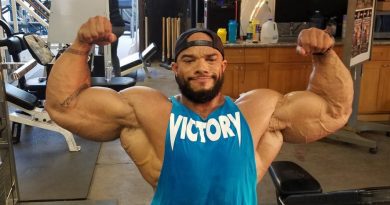Beginner Teen Bodybuilding: Breaking it Down
Getting into bodybuilding is one of the best things you can do in your teen years. In my time as a certified trainer and nutritionist, I’ve seen how learning the discipline of training and proper eating builds a foundation for a healthy life.
Many schools now include weight training in physical education, which benefits all students, not just athletes. This guide will give you the essential tips to start your teen bodybuilding journey safely and effectively.
The teen years are a time of major physical and hormonal changes. Because you’re still growing, the number one rule is safety. Pushing weight your body can’t handle with perfect form is a fast track to injury, which could sideline your progress before you even get started.
This is the biggest mistake I see young lifters make. They let ego take over and try to lift more than they should, leading to poor form and potential injuries. The truth is, teens can safely do any exercise with the right technique and an appropriate weight.
Let’s break down how to do it right.
Disclaimer: This article is for informational purposes only and is not meant to treat or diagnose any condition. It is recommended that you speak with your doctor before starting any exercise program, changing your daily nutrition, or adding any supplements to your regimen.
Table of contents
How Should a Teen Start Bodybuilding?
The key to a great teen bodybuilding program is focusing on the fundamentals. Organizations like the National Strength and Conditioning Association (NSCA) emphasize that a well-designed, supervised program is both safe and effective for teens.
Your goal is to stimulate the muscles, not annihilate them. This means prioritizing form over weight and giving your body plenty of time to recover and grow.
- Training Frequency: Aim for 3-5 days per week. This gives your muscles the 24-48 hours they need to recover between sessions.
- Session Length: Keep workouts between 30-60 minutes. Longer sessions aren’t necessarily better and can lead to overtraining.
- Focus on Compound Exercises: Your program should be built around compound movements. These exercises, like squats, deadlifts, bench presses, and rows, work multiple muscle groups at once, building a strong foundation.
- Volume and Intensity: If your workout has high volume (more sets and reps), use lighter weight. If you’re doing lower volume, you can increase the intensity with heavier weight.
- Sets and Reps: A good range for muscle growth (hypertrophy) is 3-5 sets per exercise and 8-15 reps per set. This range is proven to be effective and safe for developing muscles.
You will likely notice strength gains before you see significant size increases. This is completely normal and is a sign that your nervous system is adapting and becoming more efficient.
Sample Beginner Teen Bodybuilding Workout Splits
There are many ways to organize your training week. The best split is the one you can stick to consistently.
- 3-Day Split Option 1: Day 1: Chest/Triceps, Day 2: Legs/Shoulders, Day 3: Back/Biceps
- 3-Day Split Option 2: Day 1: Chest/Biceps, Day 2: Legs/Shoulders, Day 3: Back/Triceps
- 4-Day Split Option 1: Day 1: Chest, Day 2: Back, Day 3: Legs, Day 4: Shoulders/Arms
- 4-Day Split Option 2: Day 1: Chest, Day 2: Back/Shoulders, Day 3: Legs, Day 4: Arms
- 5-Day Split: Day 1: Chest, Day 2: Back, Day 3: Legs, Day 4: Shoulders, Day 5: Arms
What Should a Teen Bodybuilder Eat?
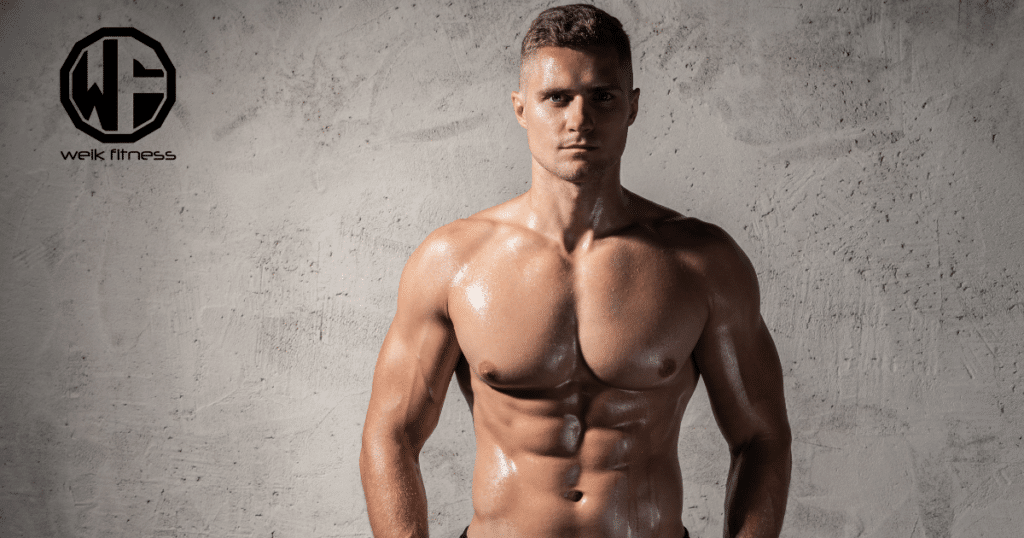
As a teen, your metabolism is often working at lightning speed. To build muscle, you need to provide your body with enough high-quality fuel. On days you train, you may need an extra 500-800 calories to support muscle growth.
Aim to eat 5-7 small meals and snacks throughout the day. This keeps your muscles supplied with a steady stream of nutrients. For a bodybuilder, a snack isn’t a candy bar; it’s an apple with peanut butter, Greek yogurt with nuts, or raw vegetables.
According to Sports Dietitians Australia, a general guideline for protein is about 1.3-1.8 grams per kilogram of body weight each day. For a 150-pound (68kg) teen, that’s about 88-122 grams of protein daily.
Here are the best foods to build your teen bodybuilding diet around.
Proteins
- Boneless, Skinless Chicken Breast
- Tuna (water packed)
- Fish (Salmon, Sea Bass, Halibut)
- Shrimp
- Extra Lean Ground Beef or Ground Round (92-96%)
- Protein Powder
- Egg Whites or Eggs
- Top Sirloin (aka Sirloin Top Butt)
- Beef Tenderloin (aka Filet, Filet Mignon)
- Ground turkey, Turkey Breast Slices or cutlets (fresh meat, not deli cuts)
Complex Carbs
- Oatmeal (Old Fashioned or Quick Oats)
- Sweet Potatoes (Yams)
- Beans (Pinto, Black, Kidney)
- Brown Rice
- Pasta
- Potatoes (Red, Baking, New)
Fibrous Carbs
- Green Leafy Lettuce (Green Leaf, Red, Leaf, Romaine)
- Broccoli
- Asparagus
- Spinach
- Cauliflower
- Celery
Other Produce and Fruits
- Cucumber
- Green or Red Pepper
- Onions
- Tomatoes
- Zucchini
- Fruit: Bananas, Apples, Grapefruit, Peaches, Strawberries, Blueberries, Raspberries
Healthy Fats
- Natural Style Peanut Butter or Almond Butter
- Olive Oil, Safflower Oil, Flaxseed Oil
- Nuts (Peanuts, Almonds, Walnuts)
- Oils (Canola, Flaxseed, Soybean, Walnut)—Omega-3
- Fatty Coldwater Fish (Mackerel, Salmon, Bluefish)—EPA and DHA
Dairy and Eggs
- Low-fat cottage cheese
- Eggs
- Low or Non-Fat Milk
What Supplements Should a Teen Bodybuilder Take?
First, let’s be clear: supplements are not a substitute for a solid diet. Your progress will always be built on the foundation of good nutrition.
For a teen bodybuilder, simplicity is best. You don’t need the latest flashy product to get great results. I only recommend a few core supplements to start.
As a personal trainer, I always advise my clients to talk with a doctor before starting any new supplement. This is especially true for teens to ensure there are no adverse reactions.

Multivitamin
A multivitamin is a smart choice for everyone. It helps fill any nutritional gaps and ensures your body has the vitamins and minerals it needs to function optimally.
Take one in the morning every day, whether you’re training or not.
Protein Powder
Protein powder is a convenient way to meet your daily protein goals. Aiming for around one gram of protein per pound of bodyweight is a common target for muscle building.
Whey protein is an excellent and affordable choice for beginners. Its most important use is for post-workout nutrition. A shake with 20-40 grams of protein after your workout delivers the building blocks your muscles need to repair and grow.
Fish Oil
Fish oil provides essential Omega-3 fatty acids, including EPA and DHA. These “good fats” are crucial for supporting joint health, brain function, and overall wellness.
You can find it in either liquid or pill form.
Why Is Rest Crucial for Teen Bodybuilding?
Many beginners make the mistake of overtraining, thinking more is always better. In reality, rest is when the magic happens. Lifting weights creates tiny micro-tears in your muscle fibers; it’s during recovery that your body repairs these tears, making the muscles bigger and stronger.
Teens should aim for 8-9 hours of sleep per night. Sleep is when your body releases growth hormone, which is vital for muscle repair and growth.
Your “off” days are just as important as your training days. This is when your body does the hard work of building new muscle tissue. Don’t skip them.
Are You Ready to Start Your Teen Bodybuilding Journey?
This guide should give you a strong foundation for how to approach your training as a teen bodybuilder. This advice applies to both guys and girls who want to build muscle and live a healthier lifestyle.
Remember that everyone’s body is different. The fun part of training is experimenting with different exercises, set/rep schemes, and routines to find what works best for you. Make your training enjoyable, stay consistent, and you’ll be on your way to amazing results.
Frequently Asked Questions About Teen Bodybuilding
Will Lifting Weights Stunt My Growth?
This is a common myth, but it’s not supported by science. According to a consensus statement from international experts, strength training does not injure the growth plates of bones or limit growth in teenagers when done correctly. In fact, it can improve bone mass and density.
What About Creatine?
Creatine is one of the most studied supplements available. The International Society of Sports Nutrition (ISSN) states that creatine monohydrate can be acceptable for adolescent athletes who are well-trained and under proper supervision. However, your main focus should always be on whole foods first.
How Do I Stay Motivated?
Track your progress. Keep a workout log and write down your exercises, sets, reps, and the weight you used. Seeing yourself get stronger over time is one of the best motivators there is.
Also, remember that building a great physique takes time. Be patient and consistent, and the results will come.
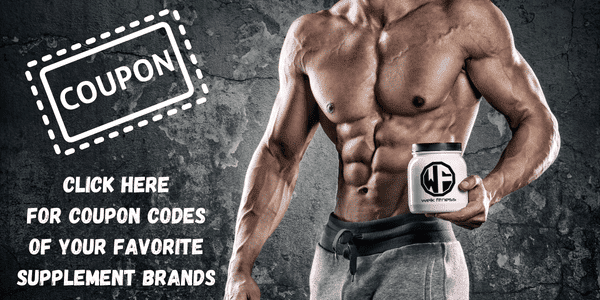

*Disclosure: This article may contain affiliate links or ads, which means we earn a small commission at no extra cost to you if you make a purchase through these links. These commissions help support the operation and maintenance of our website, allowing us to continue producing free valuable content. Your support is genuinely appreciated, whether you choose to use our links or not. Thank you for being a part of our community and enjoying our content.
PLEASE CONSIDER SHARING THIS ON YOUR SOCIAL MEDIA TO HELP OTHERS LEARN MORE ABOUT THIS TOPIC.
